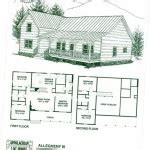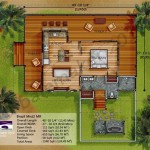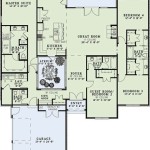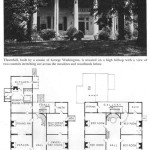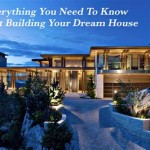Plans to build an owl house refer to the assembly of a structure specifically designed to provide shelter and nesting space for owls. These structures are often constructed by individuals or organizations seeking to support and enhance owl populations within their local ecosystems.
Owls, known for their nocturnal hunting habits and distinctive calls, are integral components of the natural world. Their presence in a habitat helps control rodent populations, ensuring a healthy balance within the ecosystem. By providing them with nesting sites, owl houses contribute to the conservation efforts and well-being of these fascinating birds.
In the following sections, we will explore the blueprints, materials, and construction techniques involved in building an owl house. With meticulous planning and skillful execution, you too can contribute to the preservation of owls and their vital role within our natural environments.
When embarking on the construction of an owl house, meticulous planning and careful execution are paramount. To ensure a successful outcome, consider the following key points:
- Choose the right location
- Select suitable materials
- Design for owl species
- Provide a secure entrance
- Ensure proper drainage
- Consider ventilation
- Keep it predator-proof
- Monitor and maintain
- Enjoy the presence of owls
By adhering to these guidelines, you can create a welcoming and functional abode for these magnificent birds. Remember, providing owls with a suitable nesting site not only benefits them but also contributes to the ecological balance of the surrounding environment.
Choose the right location
Selecting the ideal location for your owl house is crucial for its successful use and the well-being of its feathered occupants. Consider the following factors when choosing a site:
Height: Owls prefer nesting sites that provide a commanding view of their surroundings. Aim to place the owl house at least 10-15 feet above the ground, ensuring it is high enough to deter predators and provide a sense of security for the owls.
Tree Selection: If possible, mount the owl house on a living tree with a sturdy trunk and strong branches. Choose a tree that is not prone to excessive swaying or damage during inclement weather. Avoid placing the house on a dead or dying tree, as it may compromise the structure’s stability and safety.
Openness: Owls require a clear flight path to and from their nesting site. Ensure the chosen location offers an unobstructed approach and departure route, free from obstacles like dense foliage or overhanging branches.
Avoid Human Activity: While it’s tempting to place the owl house near your home for easy observation, it’s best to avoid areas with frequent human activity. Owls prefer secluded spots away from noise and disturbances, which can stress the birds and disrupt their nesting behavior.
Select suitable materials
The choice of materials for your owl house is crucial for its durability, longevity, and suitability for owl habitation. Consider the following factors when selecting materials:
- Cedar or Redwood: These woods are naturally resistant to rot and decay, making them ideal for outdoor structures exposed to moisture and temperature fluctuations. Their reddish hue also blends well with the natural surroundings, providing camouflage for the owl house.
- Pine or Fir: These softwoods are more affordable than cedar or redwood but require regular maintenance to prevent rot and deterioration. They can be treated with weather-resistant stains or paints to enhance their longevity.
- Plywood: Exterior-grade plywood is a budget-friendly option that provides good insulation and protection from the elements. However, it requires a waterproof coating or paint to prevent moisture damage.
- Avoid Pressure-Treated Lumber: Pressure-treated lumber contains chemicals that can be harmful to owls and other wildlife. Opt for untreated wood and use natural, non-toxic sealants or paints for weatherproofing.
When selecting materials, consider the climate and weather conditions in your area. Choose materials that can withstand moisture, temperature extremes, and potential exposure to pests.
Design for owl species
When designing an owl house, it is essential to consider the specific species of owl you intend to attract. Different owl species have varying size and nesting preferences, so customizing the house to their needs is crucial for its successful use.
- Size: Owl houses come in various sizes, depending on the species they are intended for. Smaller owls, such as screech owls and kestrels, require houses with a 6-inch by 6-inch base and a height of 12-18 inches. Larger owls, like great horned owls and barred owls, need more spacious houses with a 12-inch by 12-inch base and a height of 18-24 inches.
- Entrance Hole: The size and placement of the entrance hole are crucial for owls. The diameter of the hole should be appropriate for the species, allowing easy access while preventing larger predators from entering. For smaller owls, an entrance hole of 3 inches in diameter is suitable, while larger owls may require a 4-6 inch diameter hole. Position the entrance hole about two-thirds of the way up the front of the house, providing a clear flight path for the owls.
- Interior Space: Owls need sufficient space inside the house to move around comfortably and incubate their eggs. The interior should be large enough for the owls to stand upright without touching the roof or walls. Ensure the house has a flat or slightly concave bottom to prevent eggs from rolling out.
- Shape: Owl houses can come in various shapes, but rectangular or cylindrical houses are commonly used. The shape does not significantly impact the owl’s nesting behavior, so choose a design that complements your surroundings and preferences.
By considering the specific needs of the owl species you wish to attract, you can create a welcoming and suitable nesting environment that will encourage their occupancy and support their breeding success.
Provide a secure entrance
Creating a secure entrance for your owl house is essential to protect the owls and their young from predators and the elements. Here are some key considerations:
- Size and Placement: The entrance hole should be large enough for the owls to enter and exit comfortably, but not so large that it allows predators to enter. The hole should be placed about two-thirds of the way up the front of the house, providing a clear flight path for the owls while deterring ground predators.
- Shape: Avoid creating a perfectly round entrance hole, as this can provide an easier entry point for predators. Instead, opt for an oval or rectangular hole, which makes it more difficult for predators to grip and enlarge.
- Perch: Adding a small perch below the entrance hole gives the owls a place to land and survey their surroundings before entering the house. This provides an extra layer of security and makes the owls feel safer.
- Predator Guard: To further protect against predators, consider installing a predator guard around the entrance hole. This can be a metal plate or mesh that extends outward from the house, making it more difficult for predators to reach the entrance.
By following these guidelines, you can create a secure and welcoming entrance for your owl house, ensuring the safety and well-being of its feathered occupants.
Ensure proper drainage
Adequate drainage is crucial for the well-being of owls and the longevity of the owl house. Moisture accumulation inside the house can lead to mold growth, which can cause respiratory issues for the owls and deteriorate the structure of the house. Proper drainage ensures that water does not pool inside, creating a healthy and comfortable environment for the owls.
To ensure proper drainage, consider the following measures:
- Sloped Roof: Design the owl house with a sloped roof that allows water to run off easily. Avoid flat roofs, as they can cause water to accumulate and seep into the house.
- Drainage Holes: Create small drainage holes near the bottom of the house, allowing excess water to escape. These holes should be large enough to drain water effectively but small enough to prevent owls from escaping.
- Perforated Floor: If possible, use a perforated floor for the owl house. This allows water to drain through the floor and prevents it from accumulating inside the house.
By incorporating proper drainage features into the design of your owl house, you can create a dry and healthy environment for the owls, promoting their well-being and the longevity of their nesting site.
Additionally, consider placing the owl house in a well-drained area with good air circulation. Avoid placing it in low-lying areas or near water sources, as these areas are more prone to moisture accumulation and flooding.
Consider ventilation
Proper ventilation is essential for the health and well-being of owls. Without adequate airflow, moisture can accumulate inside the owl house, leading to mold growth, respiratory issues for the owls, and deterioration of the house structure. Proper ventilation ensures a fresh and healthy environment for the owls, promoting their well-being and the longevity of their nesting site.
To ensure proper ventilation, consider the following measures:
- Ventilation Holes: Create small ventilation holes near the top of the owl house, opposite the entrance hole. These holes should be large enough to allow air to circulate but small enough to prevent owls from escaping.
- Perforated Floor: If possible, use a perforated floor for the owl house. This allows air to circulate through the floor and prevents moisture from accumulating inside the house.
- Avoid Overcrowding: Avoid placing too many owl houses in close proximity. Overcrowding can restrict airflow and create a stuffy environment that is not conducive to owl health.
Additionally, consider placing the owl house in a well-ventilated area with good air circulation. Avoid placing it in enclosed spaces or areas with poor airflow, as these areas are more prone to moisture accumulation and stale air.
By incorporating proper ventilation features into the design of your owl house, you can create a healthy and comfortable environment for the owls, promoting their well-being and the longevity of their nesting site.
Keep it predator-proof
Protecting owls and their young from predators is a crucial aspect of providing a safe nesting environment. Here are some key considerations to keep your owl house predator-proof:
Sturdy Construction: Ensure the owl house is constructed using durable materials and sturdy construction techniques. This will help prevent predators from breaking into the house and harming the owls inside.
Metal or Plastic Components: Consider using metal or plastic components, such as metal flashing or plastic predator guards, around the entrance hole and other vulnerable areas. These materials are more difficult for predators to chew or tear through.
Eliminate Perches: Avoid placing perches or other structures near the entrance hole. These can provide a foothold for predators to reach the entrance and gain access to the house.
Trim Surrounding Vegetation: Keep the area around the owl house clear of dense vegetation or overhanging branches. This will reduce hiding spots for predators and make it more difficult for them to approach the house undetected.
By implementing these predator-proofing measures, you can create a safe and secure nesting environment for owls, minimizing the risk of attacks and ensuring the well-being of these magnificent birds.
Monitor and maintain
Regular monitoring and maintenance are essential to ensure the continued safety and effectiveness of your owl house. Here are key aspects to consider:
- Occupancy Monitoring: Regularly check the owl house for signs of occupancy, such as owl droppings, feathers, or pellets. Monitoring occupancy will help you assess the house’s usage and identify any potential issues.
- Structural Inspection: Periodically inspect the owl house for any damage or deterioration. Check for cracks, holes, or loose parts that may compromise the house’s integrity and provide entry points for predators or moisture.
- Cleaning and Sanitation: Clean the owl house annually to remove accumulated debris, droppings, and nesting materials. Use a natural, non-toxic cleaner to avoid introducing harmful chemicals into the environment. Proper sanitation helps prevent the spread of diseases and parasites that can affect owls.
- Predator Deterrence: Monitor the surroundings of the owl house for signs of predators. If you notice any predator activity, take appropriate measures to deter them, such as removing potential hiding spots or installing predator guards.
By implementing a regular monitoring and maintenance plan, you can ensure that your owl house remains a safe and suitable nesting site for owls, contributing to their well-being and the conservation of these fascinating birds.
Enjoy the presence of owls
Attracting owls to your property with a well-designed owl house can bring immense joy and fulfillment. Here are several reasons why you should cherish the presence of owls in your surroundings:
- Silent Guardians: Owls are often referred to as nature’s silent guardians. Their nocturnal habits and exceptional hearing make them effective predators of rodents, keeping rodent populations in check and preventing damage to crops, gardens, and property.
- Ecological Balance: Owls play a crucial role in maintaining ecological balance within their habitats. By preying on rodents, they help control their numbers, which in turn positively impacts the populations of other animals and plants in the ecosystem.
- Nature’s Symphony: The distinctive calls of owls add a magical touch to the night-time environment. Their haunting hoots and eerie screeches are a symphony of nature, creating a sense of wonder and connection to the wild.
- Symbolism and Cultural Significance: Owls have long been revered in many cultures, symbolizing wisdom, knowledge, and mystery. Their presence around your home can bring a sense of peace, tranquility, and connection to the natural world.
Welcoming owls to your property through the provision of a suitable nesting site is a rewarding experience that offers numerous benefits. By embracing the presence of these magnificent birds, you become part of a larger ecological tapestry, contributing to the well-being of both owls and the environment they inhabit.










Related Posts


